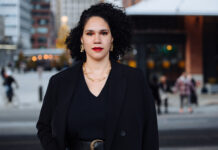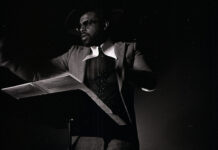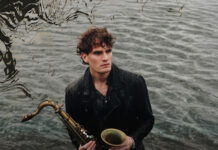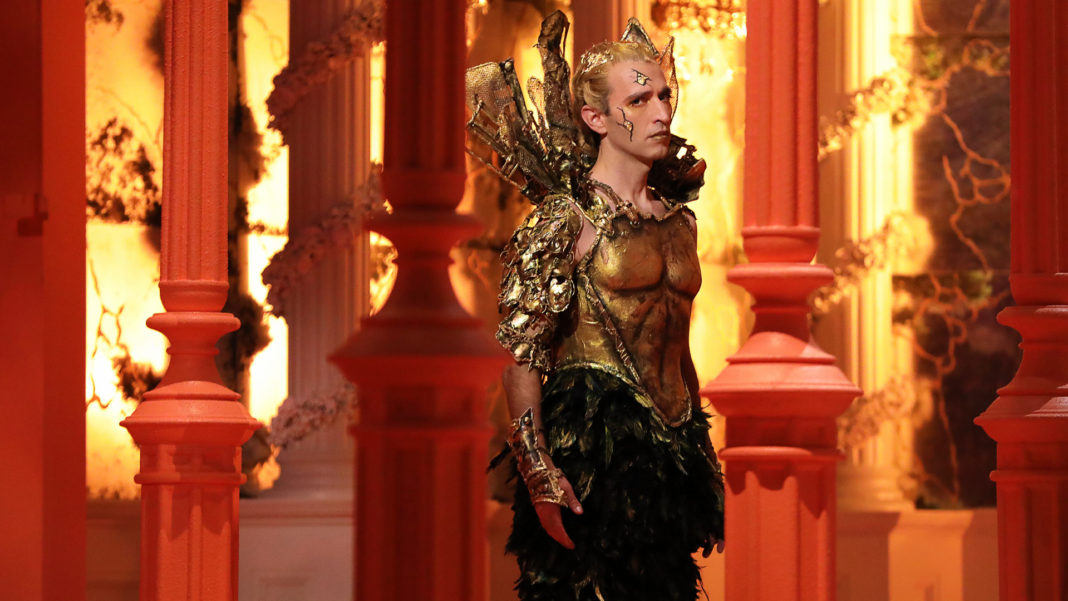In hindsight it seems inevitable that countertenor Anthony Roth Costanzo would be starring in the world premiere of The Lord of Cries at Santa Fe Opera this year. He met composer John Corigliano 23 years ago when he took the place of a boy soprano for whom puberty hit at the worst possible time – just prior to a performance of the composer’s work. Along with meeting the Pulitzer Prize winning composer, he also met his partner, Mark Adamo, who wrote the libretto for The Lord of Cries. He met James Darrah, the director of this production, twelve years ago when Darrah was an assistant on a production in which Costanzo appeared.
Corigliano and Adamo, who have been together personally for 26 years, wrote The Lord of Cries specifically for Costanzo. When I spoke to Corigliano recently he said, “When you see a countertenor in a modern role it’s very interesting. I think it’s important for someone like Anthony, who is a star, to be in a big real piece and a modern piece.”
“It was really exciting,” Costanzo told me via a Zoom call last week. “I’ve always had the utmost respect for his music. John, and he’ll say this, likes to work with abstraction. He doesn’t like to work with 1990s New York. He likes smoke and ghosts and things like that. This sat in a world of abstraction that worked for his music. But it also had concrete dramatic themes that I felt would really speak to an audience.”
In short, The Lord of Cries uses characters from Bram Stoker’s Dracula to tell the story Euripides wrote in Bacchae. If that sounds confusing, it initially was for Costanzo as well.
“At first I thought I don’t sort understand the combination of these two disparate works. Within five minutes of talking to them about it, immediately it became clear that it was actually kind of a brilliant way of seeing the underpinnings of the story of Dracula that we all know in this Greek tragedy.” (To see how Corigliano and Adamo describe their opera, please go here.)
Costanzo, who became one of the best known opera singers in the world through his performance in Akhnaten by Philip Glass, regularly worked with the creators to help them fully realize the role, just as opera singers have done for centuries.
“I did go in at different points and try things out and sing things through and let John hear it. I think that gave him something for his inner ear as he was composing to hear it be realized. If you think about the history of opera, a lot of these roles were written with a specific singer in mind. Then other singers went and did it. But that specificity you hear in your mind helps the music take on a shape that I think makes it very singable and very accessible in the best sense.”
The themes Costanzo felt were relevant today tackle both repression and one’s place in society.
“This is an opera about repressed desire and what that does. But even more topical in some ways is this idea of place that’s really in the Euripides as well as the Stoker. One line in the opera they say a lot is ‘Deny him not his place.’ And I think what the repressed Victorian London is kind of saying is ‘He has no place here. You have no place here. There’s no place for an outsider.’
“There are a lot of different things happening in our world and reckonings about identity, whether that be sexual identity or gender identity or racial identity. There is this problematic sense of whether somebody has a place or doesn’t have a place. And I think what Dionysus and Dracula both try and show through being the stranger and the outsider is that we are all the same basically. We come from distinct backgrounds, but we share this communal psychology and I think that’s a powerful message for now.”
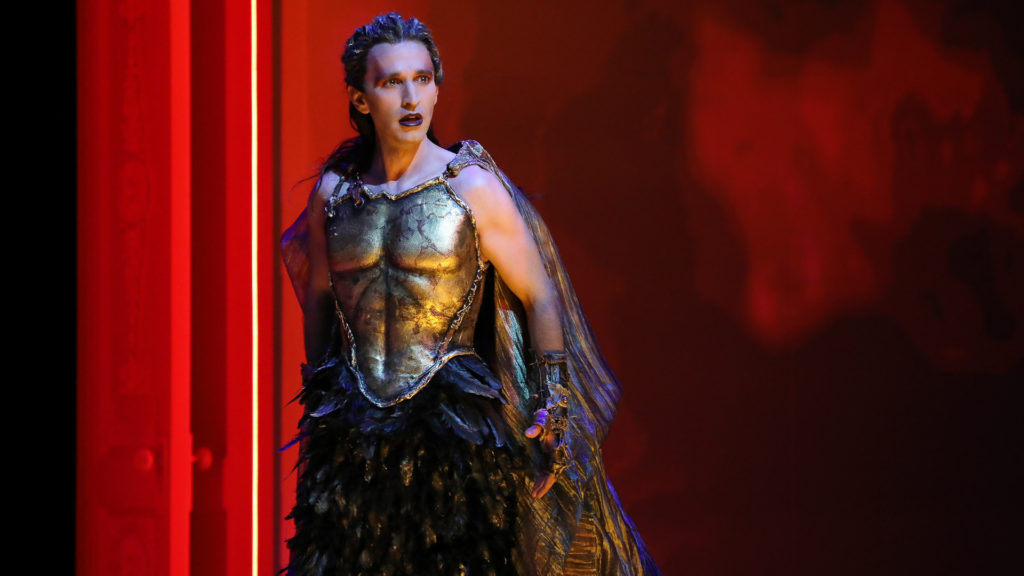
As Costanzo was coming of age and becoming aware of his own sexuality, he was very supported by his parents. As he told me, he didn’t have to struggle as much as others with being gay. He did, however, have his own hurdles to climb within the world of opera.
“I had a fairly easy time of it all because my parents are both psychologists and they were very accepting. That said, within the field of opera sometimes I felt that I should fit into a mold, a pre-determined mold. It took a while for me to feel like I could fully actualize my own concept of self in something like Akhnaten which has a gender fluidity and queerness, but also a real sort of powerful beauty and mystery in it. It took me a while to understand I could forge my own path. Now I think that’s a really crucial for art and for our platform as we move forward.”
His increasing fame came along with greater opportunities and greater responsibilities.
“I’m going to be the artist-in-residence with the New York Philharmonic next season and the pillar of the programming I have curated is called Authentic Selves. My work over the pandemic creating and producing Bandwagon was both a joy and an education. It was an initiative which first brought a pickup truck to all different neighborhoods. As an extension of that we created partnerships with different institutions. Rather than say we are the New York Phil and we will tell you what we want to do and if you want to participate great. Instead we would go to the National Black Theatre, El Puente Arts, Casita Maria, Flushing Town Hall and say ‘We’ll pay you, we’ll pay the artists, we’ll give you the stage. What do you want to do?’ How can we hand over control in small ways until these seismic changes of representation happen within the field. I think we have to be thinking both micro and macro at all times and working very hard and tirelessly to implement those changes.”
Of course, the classical music world and opera in particular move at pretty slow paces. With the clock ticking ever more loudly about representation in front offices and on-stage, Costanzo feels there’s no time to waste.
“I agree that life is short and opera is long as they say. But I think it is crucial that we be thinking about this all the time. There’s no time to waste. And I think that in the past year we have seen some progress which is encouraging. But I think we are in danger of losing the momentum as we return from COVID and crave the comfort of things going back to the way they were. It’s very important; however, as Masha Gessen said in The New Yorker, not to rebuild what we have lost. We have a chance here to rebuild and we better increase the momentum as opposed to letting it wane in our search for quote unquote comfort.”
For tickets to The Lord of Cries please go here. There are performances on August 5th, 11th and 17th.
This is the fourth in a series of interviews with artists performing at Santa Fe Opera this season.
All Photos: Anthony Roth Costanzo in The Lord of Cries (Photo by Curtis Brown/Courtesy Santa Fe Opera)


